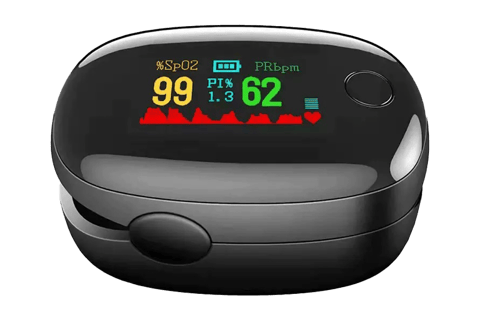Blood Vitals
Non-invasive devices for accurate blood analysis and health insights, integrated into wearables.
Trusted by thousands globally
★★★★★


In an age where technology meets wellness, blood vitals Canada are transforming personal health monitoring. Whether you're managing a chronic illness or just curious about your daily health metrics, these devices offer real-time insights into your body’s key functions—without stepping into a clinic.
In this comprehensive guide, you’ll learn what blood vitals devices do, how they work, who benefits most, and how to choose the right one for your lifestyle.
1. What Is a Blood Vitals Device?
A blood vitals device Canada is a health monitoring tool designed to measure and track key physiological indicators, typically related to your cardiovascular and respiratory systems. These devices provide instant readings for:
Blood pressure (BP)
Heart rate (HR)
Blood oxygen saturation (SpO₂)
Respiratory rate
Body temperature
Electrocardiogram (ECG or EKG)
Heart rate variability (HRV)
These readings give you critical insights into how well your heart and lungs are functioning, how your body responds to stress, and how effectively it's recovering from workouts or illness.
2. How Do These Devices Work?
Blood vitals devices use a combination of advanced sensor technology and algorithms to measure your vital signs. Here's a breakdown:
2.1 Photoplethysmography (PPG)
This is the most common method used in wearable devices. A light sensor (usually green or infrared) detects changes in blood flow beneath your skin, which can be used to estimate heart rate and blood oxygen.
2.2 Oscillometric Technology
Used in traditional blood pressure cuffs. The cuff inflates and slowly deflates, measuring the force of blood flow against the artery walls.
2.3 Electrocardiography (ECG)
Some advanced wearables and handheld devices use electrodes to capture the electrical activity of your heart. This is especially helpful for detecting irregular heartbeats or atrial fibrillation (AFib).
2.4 Thermistors and Infrared Sensors
These detect skin and body temperature, which can signal fevers or help with sleep and recovery tracking.
3. Key Benefits of Using a Blood Vitals Device
3.1 Real-Time Health Monitoring
Instead of waiting for your next doctor’s visit, you get daily—or even hourly—data. This is especially valuable for:
Monitoring blood pressure trends
Managing chronic conditions like diabetes, heart disease, or asthma
Detecting early signs of illness or stress
3.2 Better Communication With Doctors
Many devices allow you to export data, generate reports, or sync with health apps like Apple Health or Google Fit. This makes doctor consultations more data-driven and effective.
3.3 Preventive Health Tracking
By identifying anomalies early—like irregular heartbeat, low oxygen levels, or spikes in blood pressure—you can take proactive steps before symptoms worsen.
3.4 Fitness Optimization
Athletes and fitness enthusiasts use vitals devices to monitor recovery (HRV), stress (heart rate + respiratory rate), and effort zones during training.
4. Who Should Use a Blood Vitals Device?
These devices are incredibly versatile and helpful for many types of users:
User TypeBenefits GainedSeniorsStay on top of BP, HR, and fall detectionChronic PatientsManage conditions like hypertension or arrhythmiaFitness EnthusiastsMonitor performance, HR zones, recovery, and oxygenBusy ProfessionalsTrack stress, sleep, and overall health balanceParents/CaregiversUse fingertip oximeters or thermometers for kids
5. Types of Blood Vitals Devices
5.1 Smartwatches & Wearables
Examples: Apple Watch Series 9, Samsung Galaxy Watch, Fitbit Sense 2
These offer continuous tracking of HR, SpO₂, temperature, and ECG. Ideal for daily use and real-time updates. Many now also include stress and sleep tracking.
Pros:
All-in-one health + lifestyle features
Sleek and wearable
Integrate with phone apps
Cons:
Battery life can be short (especially Apple Watch)
Accuracy may vary based on sensor quality
